The folks who have hung around our kitchen table over the years have been pretty much all “neck-down” blues and folk and jazz fans. Most of us wouldn’t know a flatted seventh from a fork lift. We’re not players (although Arlo was known to deliver a bent, screaming guitar lead or two, and Nathan has an historical penchant for showing up in small clubs and playing mouth-harp with bands on open-mike nights—but we’re not players). And we’re sure not musicologists.
On the other hand, we listen pretty good.
And we know enough about how things spread from person to person, in the great American underground, to doubt that you can draw straight lines from the Delta to Memphis to Chicago in a conversation about the music and encapsulate anything as amorphous as folk music or the blues. What about Georgia? What about Texas? What about Indianapolis? What about Ozaukee County?
And what about the women?
We weren’t around, but it seems to make sense that “THE BLUES” (as a form) probably coalesced in the late 1800s. Flat disk records were introduced in 1895. Fast Mail train Number 97 jumped the tracks near Danville, Virginia in 1903. By 1913, even Tom Edison had moved to disks at about the same time that he was auditioning for vocal talent.
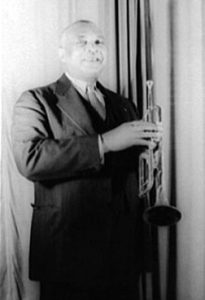
In 1914, a song was published. It would go on to sell millions of copies in various versions. The story we got is that a gentleman named William Christopher Handy had written it in a Memphis bar on Beale Street, called the PWee Saloon (Pee Wee).
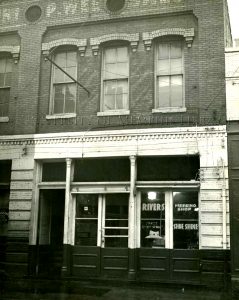
For the record, the PWee was owned by an Italian immigrant, according to our sources. Handy had to publish the song himself, in 1914, when nobody else was interested. It was first recorded around 1917. It would eventually be performed in public for the first time by a black woman, after Handy specifically gave permission. The woman was Ethel Waters. The song was St. Louis Blues.
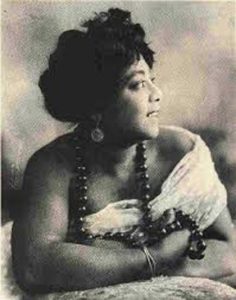
In 1920, Mamie Smith recorded Crazy Blues for Okeh Records, and became the first African-American artist to take a “blues” song over a million copies sold (reportedly over two million eventually). Some say it was the first “race” record. It sure opened things up.
And this was all overlay for the lady who built the form and topics and attitude of the blues, starting well before Handy and any of the Smiths who sang the blues in the next few years. They called her “The Mother of the Blues” and there are strong arguments for the accuracy of the appellation.
Gertrude Malissa Pridgett had been born in Columbus, Georgia in 1886. In about 1904, she married William “Pa” Rainey, a featured dancer, comedian and singer with the Rabbit Foot Minstrels, one of the more popular touring shows. “Blues” wasn’t on the menu of the minstrel circuit…it was “folk” music from the rural areas of the country. Supposedly, the young Mrs. Rainey was working a show in a small Missouri town when a girl came into the tent one morning and offered a song about a man who had left her. It had a totally different sound. “Ma” learned it and began to use it as an encore, and got a huge response, but didn’t know what to call the sound. One day, goes the story, she responded to the frequent question, “What is that stuff?” by saying, “It’s the blues.” Who knows…
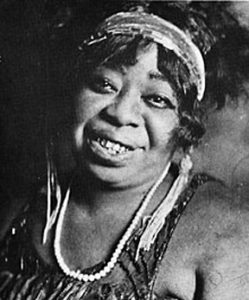
By 1914-1916, the act was billed as “Rainey and Rainey, Assassinators of the Blues.” By December of 1923, when she cut her first record, she was on her own, billed as “Madame” Rainey, with a headband, gold and diamonds, feathered boas and a stage band of her very own.
That first record? Well, remember the Wisconsin Chair Company and Ozaukee County? Yup. Gertrude “Ma” Rainey laid down more than 90 “sides” in a five-year recording career and every one of them was for Paramount Records, of Grafton, Wisconsin, employing studios in Chicago and elsewhere. The first one was called Boweavil Blues. She was called “The Paramount Wildcat.”
Her later accompanist and musical director was a young man named Thomas Dorsey, of whom we’re going to see a whole lot more. He was also known, in the years to follow as “Georgia Tom” Dorsey. For now, it need only be said that by the time Ms Rainey quit recording he and Tampa Red were the original “Hokum Boys,” and a whole lot of folks believe that he cut the template for Gospel singing. (And if you don’t think you know what “hokum” is, just stick around.) (The pianist in this version of Ma’s stage band is Georgia Tom Dorsey.)
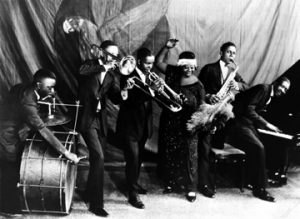
In about 1933, she retired from the road and returned to Columbus, Georgia, outside Fort Benning. She owned and operated two theatres in Rome, Georgia. She joined the Friendship Baptist Church, where her brother was a Deacon and she died at age 54, on December 22, 1939. She is buried at the Portersdale Cemetery in Columbus.
There are plenty of people who seem willing to call her the “Mother of ‘Classic‘ Blues” as opposed, apparently to “country” and “city” blues. Out here among the neck-down listeners we just call her terrific. And some collection of her work is absolutely essential to any collection of music born in America.
By 1927 or 1928, “Ma” Rainey had purchased her own bus to take her show on tours. Before she was done, Bessie Smith would have her own railroad car.
We’ll get back to that.

With thanks! Valuable information!
This post is in fact a good one it helps new net viewers, who are wishing for blogging.